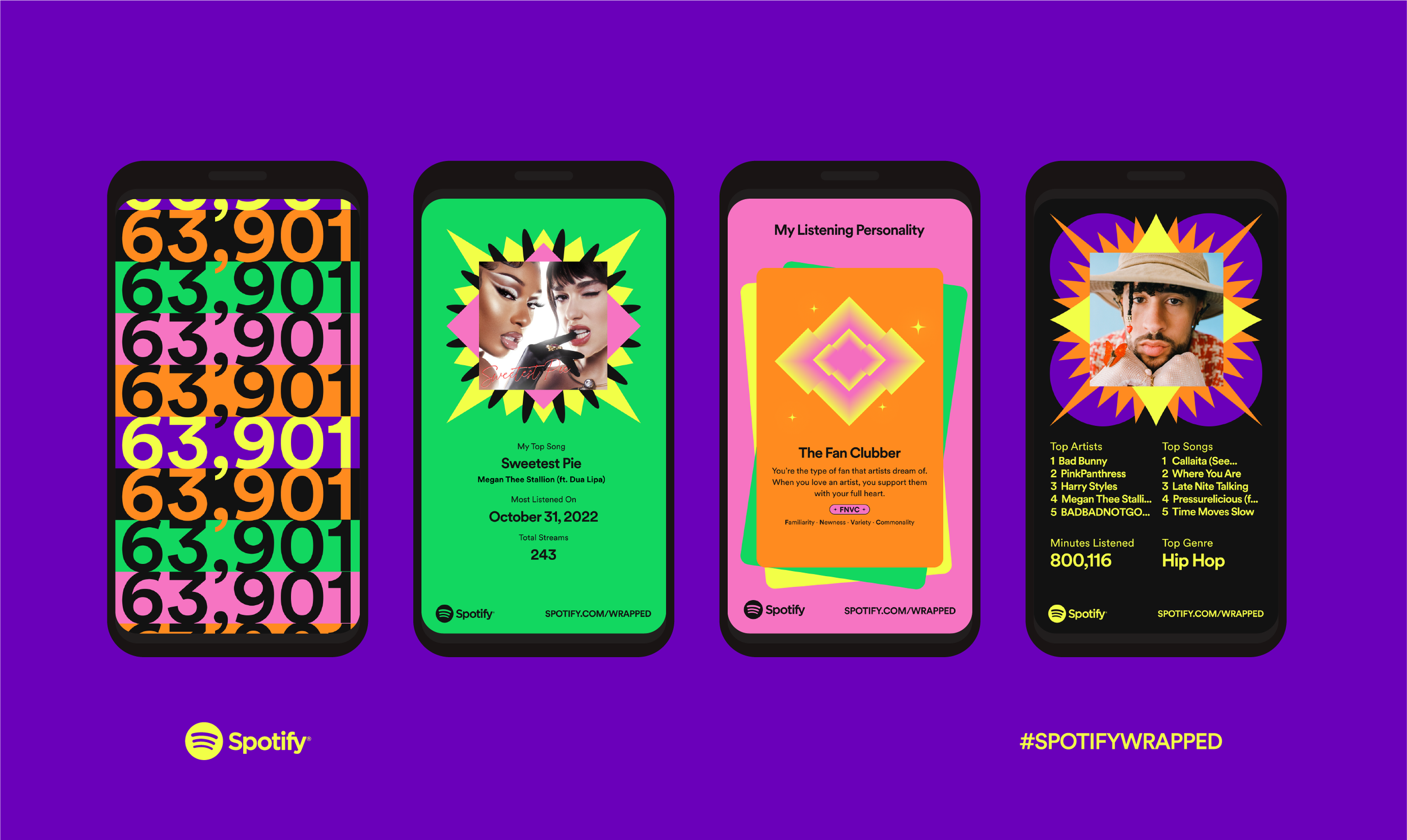Spotify: the company reshaping PR Campaigns
How brands can learn from “Spotify Wrapped” and other personalized user-data driven PR campaigns
In 2007, American adults were exposed to as many as 5,000 advertisements a day, according to the New York TImes.Today, with the with the rapid explosion of social media and other digital platforms, experts estimate the number could be anywhere from 5,000 to 10,000. Additionally, despite corporations' best efforts, over 70% of consumers report they find ads annoying above all else. However, Spotify has managed to break through the noise with its “Spotify Wrapped” campaign, which according to Variety, stands as the company’s biggest and most successful PR and marketing initiative to date. Although Spotify’s campaign frequently features engaging visuals and celebrity endorsements, the heart of what makes the campaign so successful is its use of consumer data to create a personalized experiences for users, that borrows tactics less from traditional advertising and more from PR. Spotify Wrapped transforms users from passive listeners into active brand ambassadors, demonstrating the power of PR in building engagement and authentic relationships between companies and their audiences. This fast-evolving PR trend has also been embraced by brands like Apple and even local libraries like the Kitsap Regional Library in Kitsap, Washington.
Spotify’s Success
Since its start in 2015, “Spotify Wrapped” has captured the attention of traditional media and social media alike. With the #SpotifyWrapped2024 hashtag having over 41,000 posts on TikTok alone. Although the hashtag’s metrics for views and likes are harder to quantify on Tiktok, various of the top posts under the hashtag have over 100,000 likes and a million views. Even though not every post is positive, the campaign successfully achieved its goal: becoming trending topic and keeping Spotify at the front of public conversation every December. Some strategies we can learn from Spotify are:
Prioritize visual appeal. Present the information in an engaging format with fun graphics.
Create a distinctive campaign name. A unique name makes it easier for people to recognize and share content tied to your campaign.
Embrace all conversation, even criticism. Not every reaction to your campaign needs to be entirely positive to keep people engaged and talking.
Apple’s Interpretation and how it can be adjusted
Apple’s “Apple Music Replay” campaign has encouraged significant earned media coverage, particularly among industry trade media outlets. However, it has struggled to achieve the same cultural impact as Spotify Wrapped, especially on social media. The #AppleMusicReplay2024 hashtag has only 1,100 posts on TikTok. While Apple Music has a smaller user base than Spotify, other factors may also contribute to its lower success, including a less personalized end user experience and fewer opportunities for users to engage with one another.
Some strategies, Apple Music could use to refine its current strategy include:
Make data more shareable and fun. Introduce quirky unique music categories that encourage user interaction online, similar to how Spotify’s 2024 Wrapped featured categories like “Pink Pilates Princess Strut Pop” and “After Hours Football Rap” that lead to signficant online interactions.
Utilize celebrity and influencer partners to help promote the campaign.
Build anticipation for the campaign with early social media promotion.
Kitsap’s Strategy
Organizations without the resources to create fully personalized reports can take inspiration from the Kitsap Regional Library’s approach. Instead of generating individual user data reports, the library compiled its circulation data into a general 2024 year-in-review, highlighting its most popular titles, authors, and genres. The corresponding social media post became one of the library’s most-liked Instagram posts and even caught the attention of one of the featured authors This strategy still succeeded in utilizing user data while remaining a manageable initiative for the organization.
Potential Challenges
While individuals may enjoy reflecting on their entertainment history at the end of the year, their spending habits can be a more sensitive subject. These types of campaigns could also raise privacy concerns. Before incorporating user-data-driven campaigns into their PR strategy, organizations should carefully consider the following:
What kind of data will be shared?
How will the data be made available?
Are audiences aware their data is being collected and may be shared?
PR campaigns built around user data have proven highly successful for, and this is far from a fading trend. More organizations, especially entertainment companies like Netflix, Disney, and HBO, should explore how they can implement similar strategies. However, it is equally important for organizations to consider their audiences and how they would feel about their data being collected and shared before implementing similar strategies.

